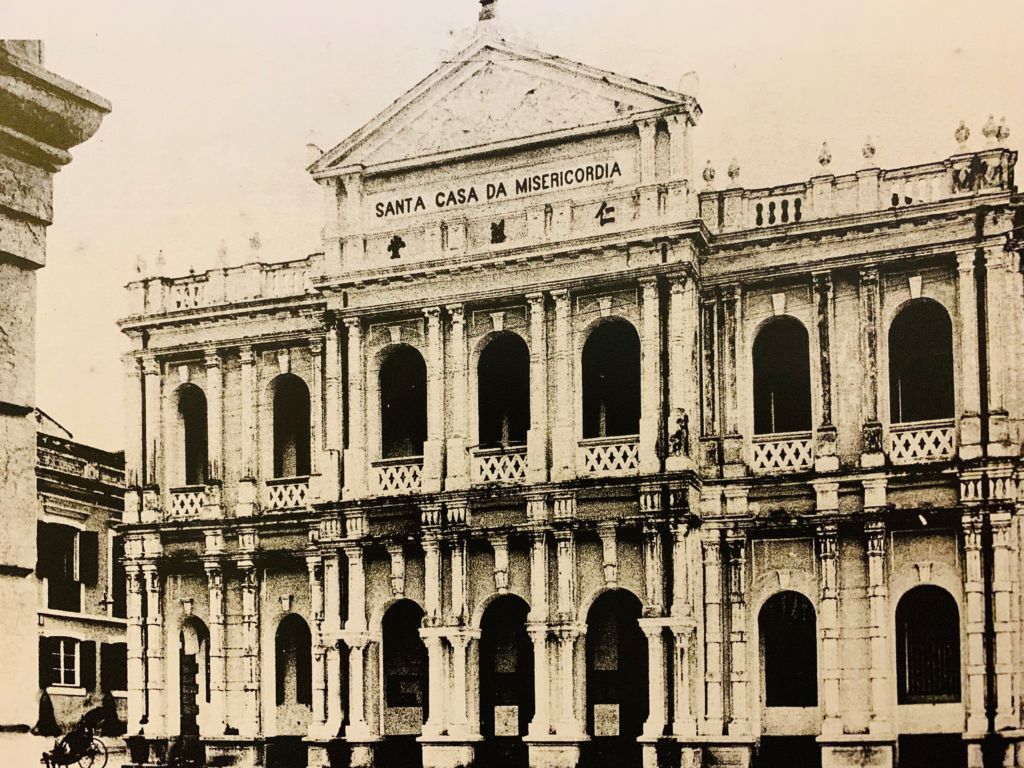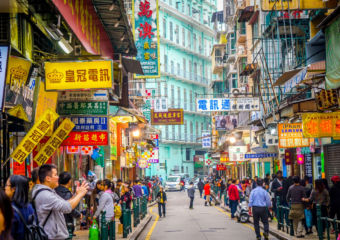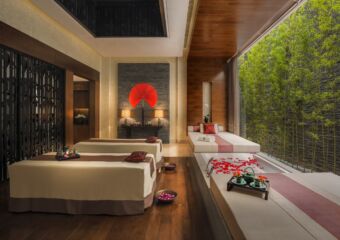Photo credit: Macao Archives
The Macau Holy House of Mercy is a charitable organization that stems from Queen D. Leonor’s relief reforms that took place from 1485 onwards. The founder of Macau Holy House of Mercy, then known as “Confraternity and Fraternity of the Macau Holy House of Mercy” was bishop D. Belchior Carneiro, who created it shortly after his arrival to Macau in 1569. The building’s project is credited to Italian architect, Cassuto. The aim of this organization was to help people in need such as the elderly, the poor and sick. The bishop was, in fact, an integral figure in the establishment of a draft version of a social aid system.
From Then Until Now
Now known as the Macau Holy House of Mercy–Santa Casa da Misericórdia de Macau in its official Portuguese name–the institution still remains in its original location: Leal Senado Square. At the time, the area looked nothing like it does presently. It served several purposes throughout history, including being a medical clinic with some other social aid structures attached. At one point, it was also an orphanage and asylum for widows who’d lost their husbands at sea.
According to official records and their first statutes (1627), the Macau Holy House of Mercy’s goal has been, since then, to pursue the same “spiritual and corporal works” of the main branch, in Portugal. There are seven spiritual goals–to give good advice, teach the ignorant, console the sad, punish those who err, pardon insults, suffer with patience the weaknesses of our fellow men and pray to God for the living and the dead. Whereas their seven corporal goals are to provide food to the hungry, give drink to those with thirst, clothe the naked, visit the sick and the incarcerated, shelter the pilgrims, redeem those imprisoned and bury the dead.
The institution still follows these commandments, providing a series of structures to help the population, including a nursery for children, shelter for battered women, elderly people and the poor, among others. The Macau Holy House of Mercy was also responsible for boosting the St. Lazarus neighborhood, where, at different given times, they had a women’s shelter, a leper center and a church. The area has since undergone some changes, becoming one of Macau’s most dynamic and artsy districts. However, there are still traces of the institution’s work there.
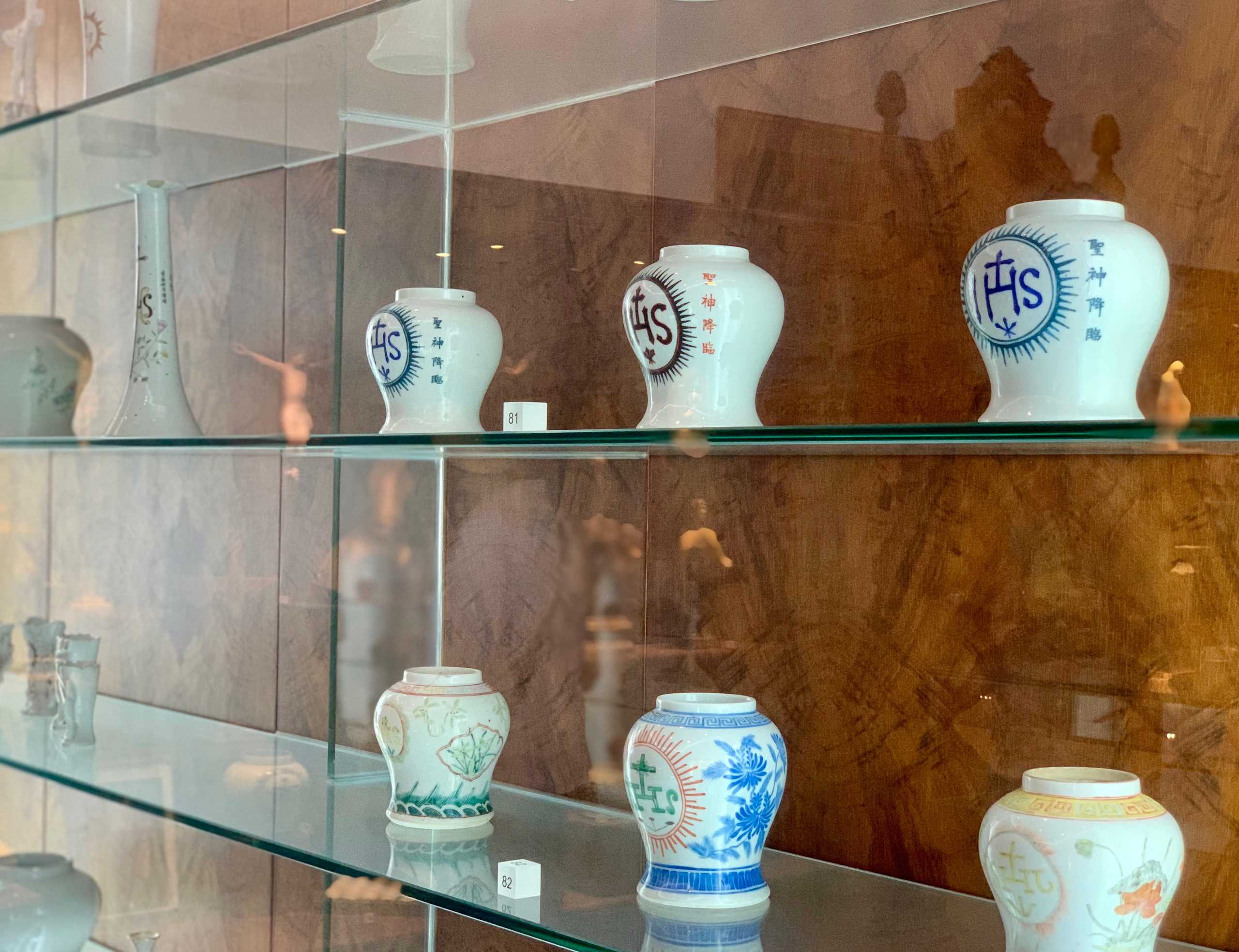
Porcelain pieces with the Society of Jesus monogram at the Macau Holy House of Mercy Museum.
Sacred Museum Pieces
The Macau Holy House of Mercy also has a magnificent museum full of sacred art pieces, including sculptures and figures of saints, and some relics dating back to the 16th century. One of them is the original manuscript of the Commitment of the Macau Holy House of Mercy, of 1662. It opened its doors at the headquarters’ building in 2001 and was intended to promote the history of the organization.
The gallery’s entrance invites people in with a bust of the Macau Holy House of Mercy’s founder, Bishop D. Belchior Carneiro. There are also some explanatory introductions at the start and one can roam about the building without having to follow a specific trail. The gallery begins upstairs (first floor) and has different rooms to visit.
One of the museum’s main attractions is its collection of ceramics bearing the Society of Jesus (Companhia de Jesus) monogram (see image above) from different parts of the world (China, Japan, Europe), which allows the public to understand the wide scope covered by the religious order to which the Jesuits belonged to. The collection also includes ancient altars, religious artworks, and paintings of important church contributors, among others.
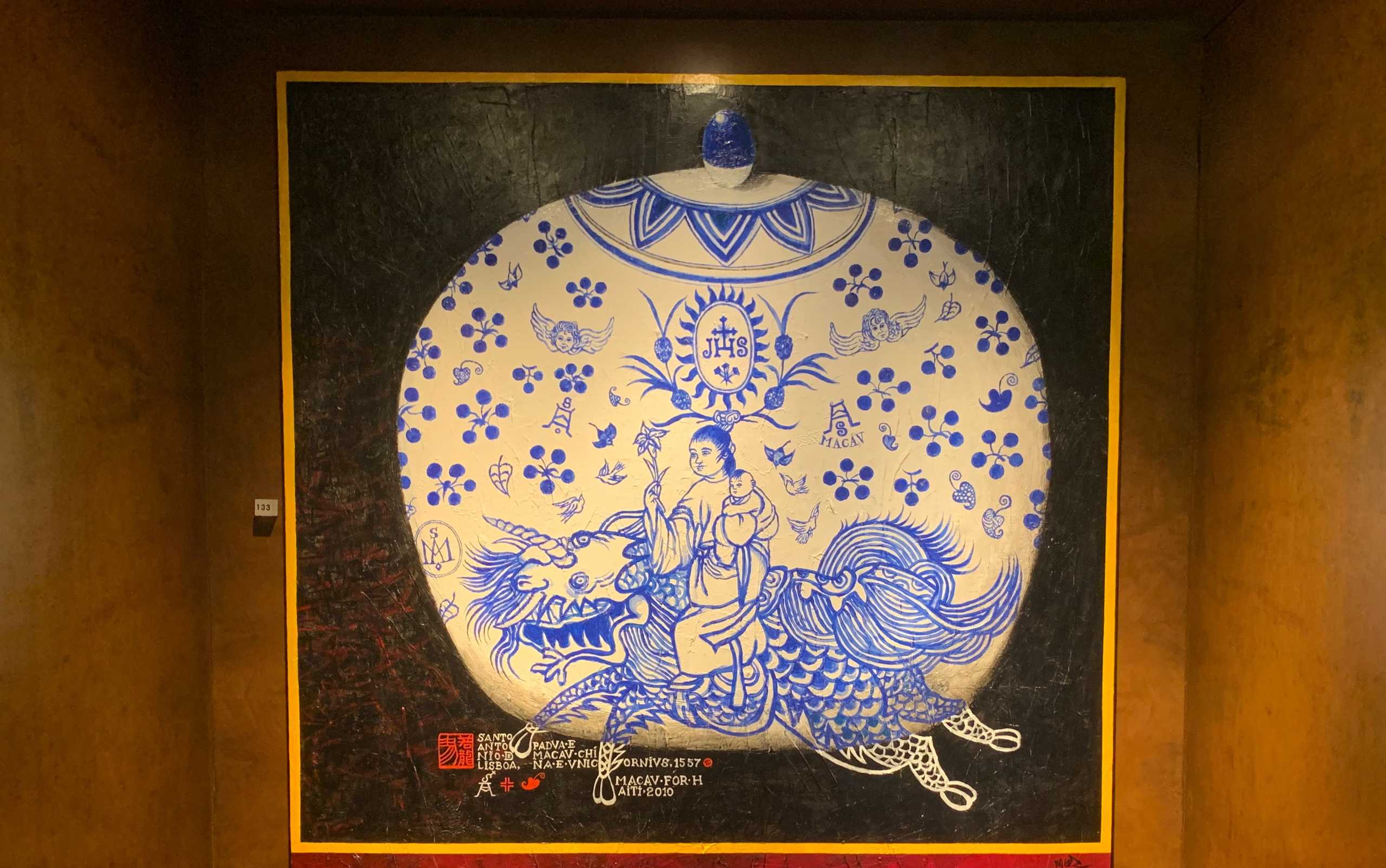
Painting of a pot with the Society of Jesus logo at the Macau Holy House of Mercy Museum.
So Much More Than Charity
Besides the creative and cultural hub at St. Lazarus (Albergue SCM), the local organization has a nursery located in N.A.P.E. area, an elderly center (Our Lady of Mercy Home for the Elderly) close to the Ruins of St. Paul’s that was inaugurated in 2000, but also a rehabilitation center for the blind opened since the 60s. Located in the north part of Macau (near the Canidrome), it has room to help 50 blind people by facilitating their daily lives. Travessa da Misericórdia hosts yet another section: the Fraternity Leisure Centre. It has a restaurant serving lunch and Macanese homemade snacks!
According to an official UNESCO document, one of the reasons the Historic Centre of Macau was included in the World Heritage List is the city’s historic monuments which were described as “… the oldest European architectural heritage existing in China today”. The Macau Holy House of Mercy is included in the area. Featuring a richly adorned arcaded façade, it has several columns and pillars with a beautiful veranda on the first floor. Its arcades make for great photos, especially when combined with the yellow and white tones that decorate the building’s exterior which were typical colors in traditional Portuguese architecture.
The area was inscribed into the UNESCO World Heritage List in 2005, which gave Macau a new boost when it comes to historical and cultural sites. Historical churches, streets, monuments, and other landmarks have been highlighted since then to show tourists and other visitors that the city has much more to offer than gambling and luxury shopping!
Opening hours: Tuesdays–Sundays, 10:00am–12:00pm and 2:00pm–5:30pm
How much: MOP $5 per person
Holy House of Mercy 7 Travessa da Misericórdia, Macau, +853 2833 6957, www.scmm.mo
Also read: Vintage Macau: Explore Macau’s Buildings of the Past
https://macaulifestyle.com/culture/heritage/vintage-macau-ex…ings-of-the-past/
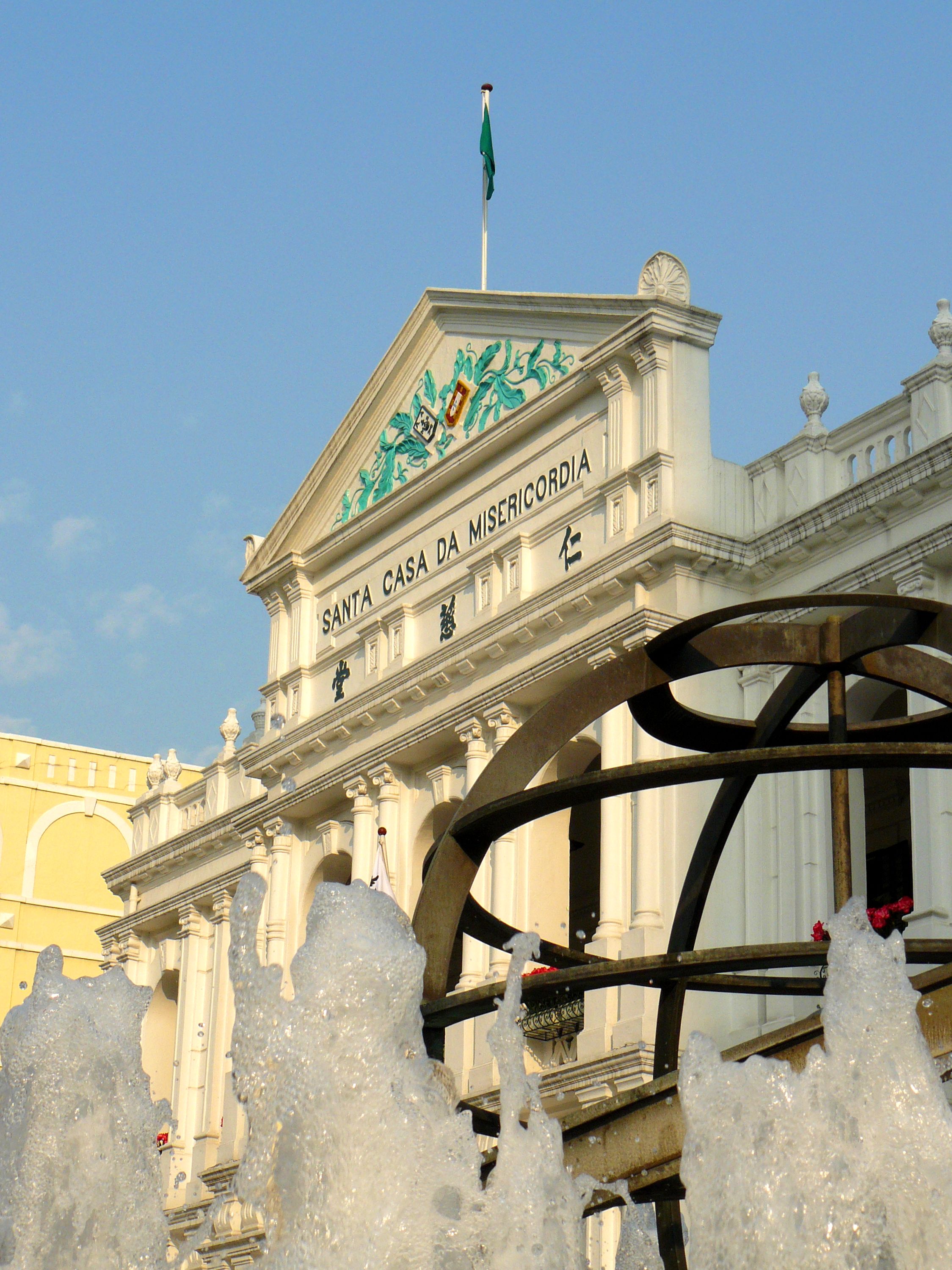
Source: Wikimedia Commons. Photo credit: Yeowatzup

